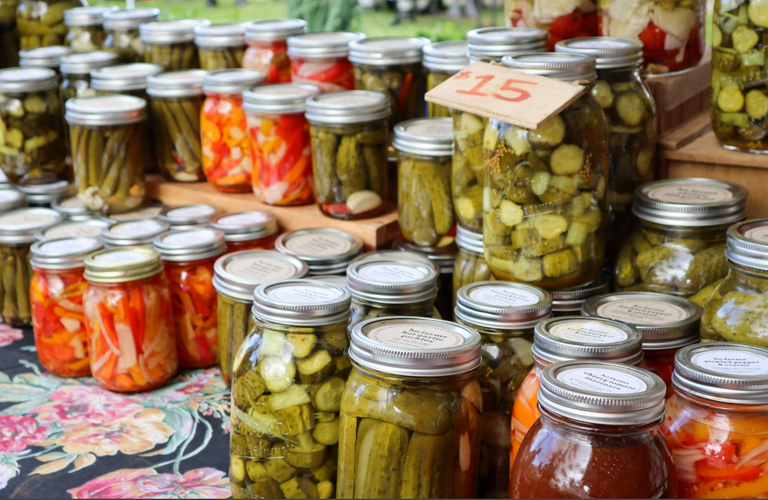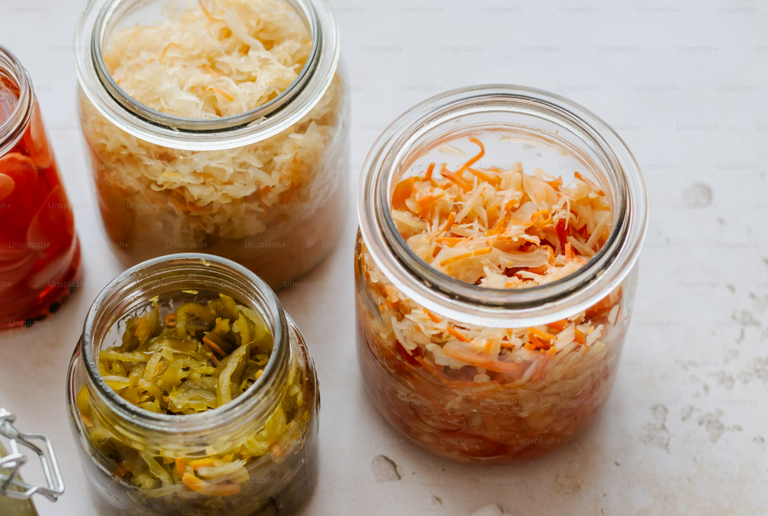Introduction
Fermentation is one of the oldest food preservation techniques, dating back thousands of years. It not only enhances the shelf life of food but also improves its nutritional value, digestibility, and flavor profile. From Korean kimchi to French cheese, fermented foods are a vital part of culinary traditions worldwide. This post explores the science behind fermentation, its health benefits, various cultural applications, and its resurgence in modern gastronomy.
The Science Behind Fermentation
Fermentation is a metabolic process in which microorganisms—such as bacteria, yeast, and molds—convert carbohydrates (sugars and starches) into alcohol or organic acids. This process occurs in an oxygen-deprived (anaerobic) environment and is primarily driven by three types of microbes:
- Lactic Acid Bacteria (LAB) – Convert sugars into lactic acid. Found in yogurt, kimchi, sauerkraut, and sourdough.
- Yeasts – Convert sugars into alcohol and carbon dioxide. Used in bread, beer, and wine production.
- Molds – Play a role in certain cheeses (e.g., blue cheese) and fermented soy products (e.g., miso and tempeh).
The primary types of fermentation include:
- Lactic Acid Fermentation – Produces lactic acid, found in yogurt, pickles, and sourdough bread.
- Alcohol Fermentation – Produces ethanol and carbon dioxide, essential for beer, wine, and bread.
- Acetic Acid Fermentation – Converts ethanol into vinegar. Used in making apple cider vinegar and kombucha.
Health Benefits of Fermented Foods
1. Gut Health & Probiotics
Fermented foods are rich in probiotics—live bacteria that support a healthy gut microbiome. They aid digestion, improve nutrient absorption, and help maintain a balanced gut flora, which is essential for overall health.
2. Enhanced Nutrient Absorption
Fermentation breaks down anti-nutrients like phytates and oxalates, making minerals like iron, zinc, and calcium more bioavailable. This is particularly beneficial for plant-based diets.
3. Boosts Immune System
A healthy gut microbiome strengthens the immune system by reducing inflammation and improving the body's defense against harmful pathogens.
4. May Aid Mental Health
The gut-brain connection suggests that probiotics in fermented foods may help reduce symptoms of anxiety and depression by influencing neurotransmitter production.
5. Reduces Lactose Intolerance
Fermented dairy products, such as yogurt and kefir, contain beneficial bacteria that break down lactose, making them easier to digest for those with lactose intolerance.
6. Preserves Food Naturally
Fermentation acts as a natural preservative, extending the shelf life of perishable foods without the need for artificial additives.
Fermented Foods Across Cultures
Asia
- Kimchi (Korea) – Spicy fermented cabbage with garlic, chili, and ginger.
- Miso (Japan) – Fermented soybean paste used in soups and marinades.
- Tempeh (Indonesia) – Fermented soybeans bound together by mold, a protein-rich meat alternative.
Europe
- Sauerkraut (Germany, Eastern Europe) – Fermented cabbage, similar to kimchi but milder.
- Kefir (Caucasus region, Russia) – A probiotic-rich fermented dairy drink.
- Sourdough Bread (Global, but with European origins) – Fermented dough made using wild yeasts and bacteria.
Africa
- Injera (Ethiopia) – A fermented sourdough flatbread made from teff flour.
- Nunu (West Africa) – Fermented milk drink, similar to kefir.
Americas
- Kombucha (China, but popularized in the U.S.) – A fermented tea with a tangy, effervescent taste.
- Pickles (U.S. & Worldwide) – Traditionally, cucumbers fermented in brine rather than vinegar.
- Chocolate (Central & South America) – Cacao beans undergo fermentation before being processed into chocolate.
Modern Resurgence of Fermented Foods
With growing interest in gut health and natural foods, fermented products have seen a revival in modern diets. Many chefs and food artisans experiment with fermentation to create bold new flavors, while health-conscious consumers seek probiotic-rich foods for their wellness benefits.
DIY Fermentation: How to Get Started
Fermenting food at home is easier than you think. Here’s a simple sauerkraut recipe to try:
Ingredients:
- 1 head of cabbage (green or red)
- 1 tbsp sea salt
- 1-2 tsp caraway seeds (optional)
Instructions:
- Shred the cabbage and place it in a bowl.
- Sprinkle salt over the cabbage and massage it for about 10 minutes until it releases liquid.
- Pack the cabbage tightly into a clean glass jar, ensuring it is submerged in its own liquid.
- Cover with a lid loosely or use an airlock system.
- Let it ferment at room temperature for 1-4 weeks, tasting periodically.
- Once it reaches the desired sourness, transfer it to the fridge to slow fermentation.
Conclusion
Fermentation is a timeless tradition that blends science, nutrition, and culture. Whether it’s improving gut health, enhancing flavors, or preserving food naturally, fermentation remains a cornerstone of global gastronomy. With its growing popularity, now is the perfect time to explore and experiment with fermented foods in your own kitchen.



